Reviews
Ralph Bakshi
USA, 1972
Credits
Review by Katherine Follett
Posted on 13 April 2011
Source Netflix Instant
Categories Ralph Bakshi’s Cool Worlds
The alliance between R. Crumb and hippies was always an uneasy one. Though he found his first audience among the longhairs and freaks of New York and San Francisco, Crumb is more than anything a highly personal artist, using his comics to exorcise his own very individual demons. It was probably just a coincidence that those demons found their expression just as the counter-culture decided to celebrate our repressed desires; Crumb himself has said that he always found hippies annoying.
According to Crumb, Ralph Bakshi was just another gullible flake who cashed in on a wishy-washy version of Crumb’s vision when he made Fritz the Cat. But Bakshi’s film is, on a few quiet occasions, much more than a translation of Crumb’s comics. Crumb may have a point—Bakshi’s interpretation of the characters, events, and ideas of Fritz the Cat hasn’t exactly held up through the years. But the few scenes that are more Bakshi than they are Crumb transcend both the source material and the audience, coming closer to feeling like Bakshi’s own true, personal, and profound expression.
Watching Fritz the Cat today, you remember that “hippie” in 1972 was roughly equivalent to “hipster” in 2011: everyone puts them down, no one self-identifies as one, and yet they’re somehow everywhere. A person with every trapping of hippie/ster-ness has an excuse for why those trappings, in their case, don’t count. Our Fritz, for instance, doesn’t consider himself a hippie. Not like those stupid hippie girls who think they understand race; he actually studied the race problem. He’s not like those silly pot-smokers, man. When he gets high, he really gets it. He’s the worst stereotype of every hippie/ster that ever lived: a slumming NYU brat infatuated with others’ poverty, paying lip service to countercultural ideals while mostly just getting high and trying to fingerbang some pretentious chicks decked out in American Apparel tie-dye and fringe.
Fritz, then, is a phony. Sometimes the film plays this up, satirizing the hippies who were ostensibly its main audience, but Bakshi seems to want to have it both ways. Hippies may be airhead hypocrites, but the movie shares many of their cultural goals—and makes many of the same blunders. Both must be given credit for breaking the rules that forbid the depiction of the darker edges of life - sex, violence, drugs, race relations - in popular art. But both also treat those things far too simplistically. The sex and drugs in Fritz the Cat are blank hedonism with no real weight or consequences, good or bad (and far too silly and ugly to be actually erotic). The violence is slapstick almost to the point of Tom and Jerry. And while Fritz and the other hippies are depicted as paternalistic and ignorant toward black people, they still get to be any animal that suits their character, while the crows - Bakshi’s stand-ins for African Americans, an idea borrowed from Disney’s Dumbo - are only ever crows. Bakshi may have wanted to position himself as an anti-Disney, but his narrative techniques are more Disney-like than he intended. The plot and dialogue of Fritz the Cat are filthy, for sure, but they are also oversimplified, pat, and too silly—in a word, cartoonish.
While we’re comparing Bakshi and Disney, it must also be said that whatever Disney’s flaws, his studio never skimped on beauty and technical sophistication—factors that are nowhere in evidence in Bakshi’s debut film, usually to its detriment. Bakshi may have intended to depict the uglier side of life, but I wish he could have done so without such ugly character design. Most movement is inconsistent and bears little relation to real physics. For a film that relies so much on music, the movements have no rhythm, and the scenes have no flow. Even at a bare 78 minutes, it seems that every scene is stretched to the breaking point by establishing shots that continue for many long moments after we’ve recognized where we are and gestures that repeat to the point of fatigue. The dragged pacing positively suffocates any humor. Fritz bursts through a ladies’ room door. Pause. Pause. Pause. A horrified woman shrieks. When the execution is so poor, Crumb’s satire comes off not as intentionally ambiguous, but confusing and mean-spiritedly stupid.
Today, when sophisticated animated satire is only as far away as the next syndicated rerun of The Simpsons, it’s difficult to grasp just what Bakshi’s X-rated cartoon must have meant to a film-going audience that had never seen hentai, or even Akira. To us, Fritz the Cat looks merely crude—not as in “dirty,” but “amateurish.” While Bakshi may have made a great leap forward in making animation with mature themes, he didn’t make the next leap by making animation with mature storytelling or artistry.
But Bakshi’s film cannot be dismissed outright, because it does contain moments of sophistication, realism, almost beauty—moments that, by no coincidence, have nothing to do with Fritz, hippies or the 60s at all. There are several scenes in the film that obviously began as ambient recordings of real people—construction workers, bar patrons in Harlem, and most personally to Bakshi, his own Jewish relatives in prayer. While the documentary voices do talk about the politics and events of the day, they are never reduced to symbols, as the animal characters are. They were not hippies, and they speak from the point of view of observers, doing so with character, ambiguity, and texture that feels wonderfully real. When these nuanced voices are paired with Bakshi’s bold-but-rough animation, they capture the gestalt better than anything he scripted or storyboarded. His use of rotoscoping (drawing over live action photography), especially in the backgrounds, works to much the same effect—it adds the spice of exaggeration to the power and detail of the real, and the result is far more compelling than the cell-flat main characters. It makes you wish Bakshi had gone for a Waking Life-style collage document of life in the urban 60s, rather than trying to translate Crumb’s unresolvably ambiguous and profoundly idiosyncratic comics. The result could have been one person’s compelling and unique interpretation of an era, instead of a clumsy adaptation of another’s art.
More Ralph Bakshi’s Cool Worlds
-
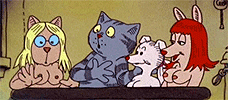
Fritz the Cat
1972 -
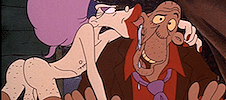
Heavy Traffic
1973 -
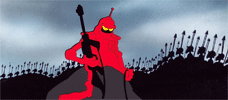
Wizards
1977 -
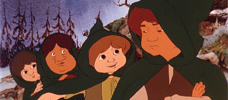
The Lord of the Rings
1978 -
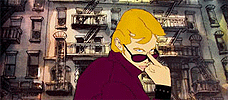
American Pop
1981 -
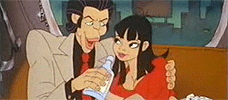
Hey Good Lookin’
1982 -
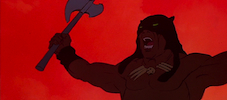
Fire and Ice
1983 -

Mighty Mouse: The New Adventures
1987–1988 -

Cool World
1992 -
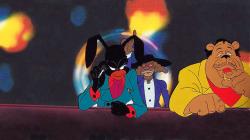
Coonskin
1975
We don’t do comments anymore, but you may contact us here or find us on Twitter or Facebook.



